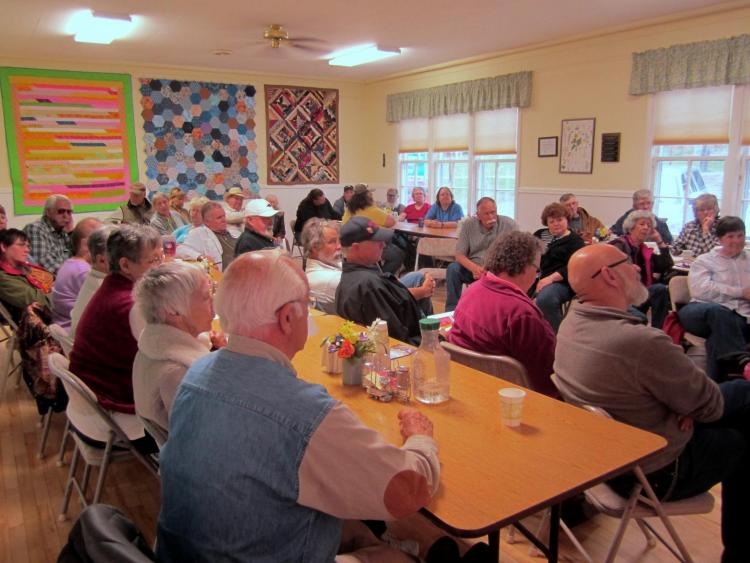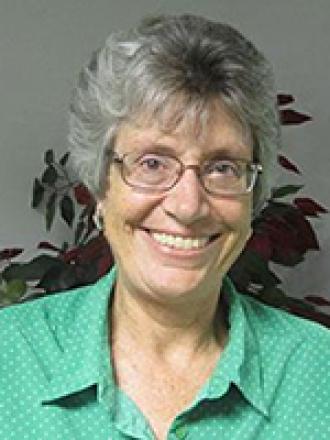Pulling Rural Towns Together to Save Businesses


The Montana Cooperative Development Center is a nonprofit organization whose mission is to help small towns meet their economic needs by pulling community members together to launch, own and support groceries, stores and other enterprises that may not be attractive for private businesses.
The MCDC was founded in 1999 as part of Montana State University-Northern in Havre. In 2004 it became an independent entity and moved its headquarters to more centrally located Great Falls.
Over the last 16 years MCDC personnel have explained the co-op business model to residents of smaller towns and helped them move through the process of purchasing or creating such enterprises to provide essential local services. They’ve helped create more than 50 business co-ops during that span.
Most have been in small towns, since larger Montana cities have their own economic development agencies, but there is a food co-op in Bozeman and a bookstore co-op in Billings.
MCDC has delivered technical assistance to fledgling cooperatives across Montana thanks to an annual $65,000 appropriation from the Montana State Legislature and essential support from USDA-Rural Development through competitive grants, usually $200,000 a year.
Jan Brown has served as executive director of MCDC since July 2015. She supervises director of operations Juanetta Keeler and communications specialist Guy Gregory. The MCDC also retains the services of seven part-time cooperative development specialists around the state who are primarily employed as business advisers or economic developers within their own regional development corporations.
How co-ops work
A privately run business can be owned by one or two people, with a top priority of making a profit to continue operations, Gregory said. In contrast, a co-op business can be owned by many members of a community, with the main goal of providing an important service to community shareholders and residents.
Co-ops sell common stock, with one share per buyer required to have a vote. They also sell additional preferred stock for those wanting to invest more to help the project. The revenue helps the co-ops raise capital and build ownership in the emerging businesses.
Co-ops are user-owned, user-controlled through election of a board of directors and user-benefitting, since they provide a service, such as restaurant, store or credit union, Brown said.
Co-ops can help provide an essential service in smaller communities since the cost of starting and running the function might be too much for a private business to operate and make much of a profit, Gregory said. Co-ops don’t have to make much money and intrinsically draw local patronage. Co-ops also provide local ownership and involvement as opposed to occasional absentee control by business owners living elsewhere.
“The co-op business model has been around a long time in the United States,” Brown said. “It was used to provide the first telephone service and expand electric lines to rural areas.”
Co-op electrical companies, phone companies, credit unions and other businesses “are a bedrock of rural Montana, providing stable jobs with good benefits,” she added.
When sought, Brown and her crew go to town meetings to explain the co-op business model.
The MCDC staff might return to the towns several times to meet with steering committees, and also answer questions by phone and email.
“We explain the process and give local people the guidelines and tools they need,” Brown said. “But they’re the ones who have to assess the proposal and decide whether to run with it. The co-op model involves local people who know their community needs and can make decisions on how to operate these important services.”
Brown outlined some of the common steps to creating a co-op run business:
• A town meeting is called at which residents can learn how co-ops work and start discussing if they want to use it. Residents volunteer for a steering committee.
• A survey is conducted to gauge financial support for a co-op and likely patronage.
• The steering committee evaluates the survey data and might explore potential building, inventory and operating costs through a feasibility study.
• Next the group can file “intent to incorporate” paperwork with the Montana Secretary of State’s office and seek an exemption in security laws from the Montana auditor’s office to allow a one-time sale of stock to finance the co-op.
• The co-op can start its stock subscription, or sales, with residents pledging to buy shares when the co-op business officially starts.
• If community residents decide to go forward, they elect a board of directors, pass bylaws and complete incorporation, including providing a list of subscribers to the Secretary of State’s office.
• After that the board of directors can hire a general manager to help complete a business plan, lease a building, set hours and hire employers.
Flexible but responsible rules
The co-op group does not have to raise 100 percent of its financing needs through stock sales, Brown said, but probably should raise 20 to 25 percent initially and as much as 50 percent when it’s ready to start up. That will provide a good base and allow the co-op to apply for grants and possible loans, she said.
“Most co-ops want to at least break even, if not make a small profit,” she said.
When co-op businesses make a profit, Montana law requires the co-op to give a certain portion back to owners of preferred stock; retain at least 5 percent for business reserves, and give 5 percent to for co-op education. The balance of the profit must go to common stock holders, based on how much they spent that year at the co-op business.
Montana law also requires that the co-op businesses cover their expenses within five years in order to continue operating.
The co-op laws are flexible but provide checks and balances to make sure the business is run properly and investors’ money is protected, Brown said.
“It’s a very democratic way to run a business, but it’s no hobby,” she said. “A co-op needs to be run in a financially efficient manner by a general manager with board oversight.”
Peter Johnson, [email protected] http://gftrib.com/29Exkqb
July 14, 2016 – Great Falls Tribune, part of the USA Today Network
Photo: Jan Brown of the Montana Cooperative Development Center







